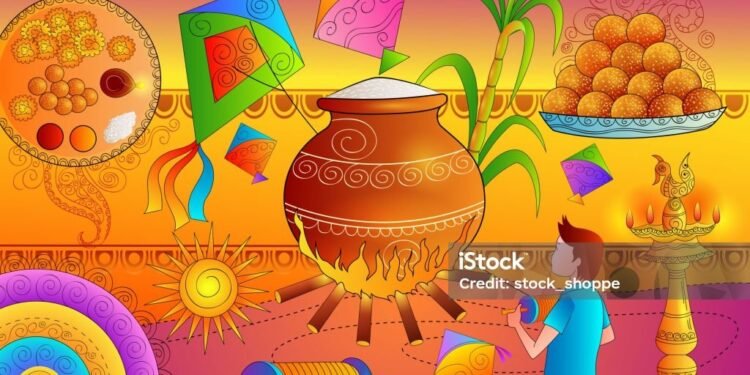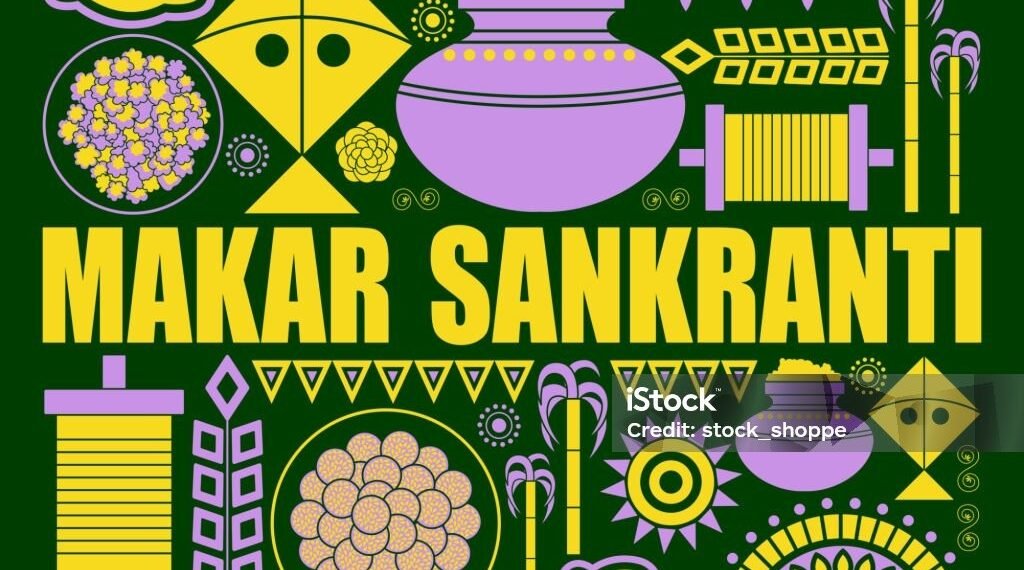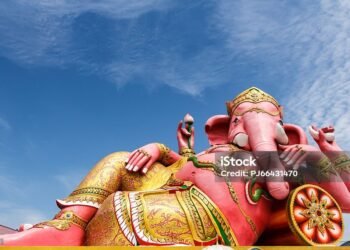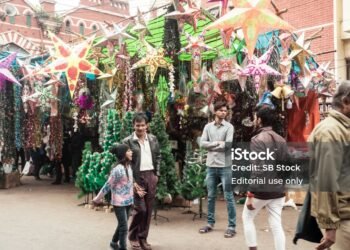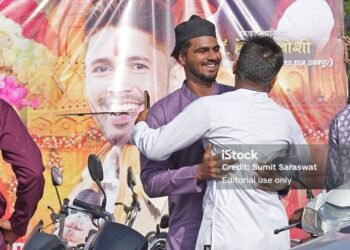Introduction
Pongal and Makar Sankranti together announce India’s first great festival cycle of the year—when the Sun’s northward passage is honored, the harvest is welcomed, and communities renew bonds through food, fire, dance, and devotion. While Makar Sankranti is observed across India (often on 14–15 January) as the Sun enters Makara (Capricorn), Tamil Nadu’s Pongal unfolds as a four‑day thanksgiving to Surya and to cattle, centering a joyous threshold ritual where new rice boils over to signify abundance and hope. In villages, these days feel elemental: earthen pots, kolam at dawn, the scent of jaggery, the clink of bells on painted horns, and rooftops alive with kites in the winter sun.
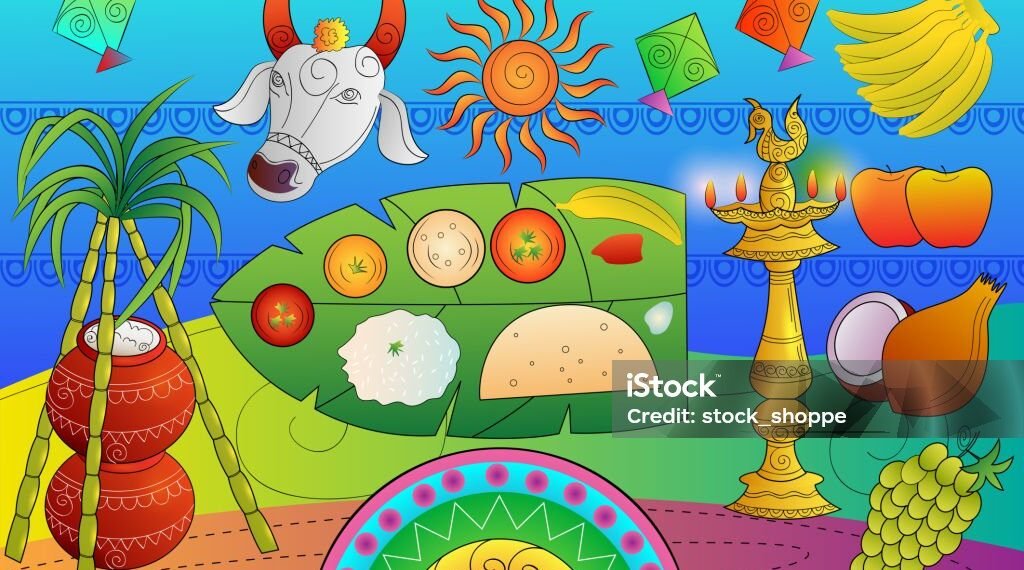
Context and origins
Makar Sankranti is one of the few Indian festivals set by the solar calendar; it marks the Sun’s sidereal transit into Makara and the seasonal turn toward longer, warmer days. The festival braids together astronomy, agriculture, and ethics: Surya worship, ritual river dips, generosity and charity, and fairs that sustain local economies. In Tamil Nadu, Pongal begins on the first day of Thai (Tamil solar month), aligning with Sankranti; it is a thanksgiving for the new harvest and a social covenant renewed at the household threshold.
Key features and vocabulary
Regional names: Pongal (Tamil Nadu), Uttarayan (Gujarat), Lohri/Maghi (Punjab–Haryana), Magh Bihu (Assam), Poush Sankranti (Bengal), Khichdi (UP–Bihar), Pedda Panduga/Kanuma (Andhra–Telangana).
Solar rites: Surya arghya (offering water), bathing at sacred rivers/tanks, charity and sweet exchanges.
Threshold symbolism: Kolam/rangoli at doorways; new pots adorned with turmeric leaves and sugarcane for the “overflow” moment—Pongalo Pongal!
Agrarian gratitude: Cattle worship on Mattu Pongal; horns painted, bells and garlands tied; tools anointed; village processions and games animate commons.
The four days of Pongal (Tamil Nadu)
Bhogi (Day 1): Homes are cleaned; old items discarded in bonfires that symbolize letting go; kolam patterns herald renewal and protection at thresholds.
Thai (Surya) Pongal (Day 2): The main thanksgiving. At sunrise, families boil new rice with milk and jaggery; as the pot froths over, the house erupts with “Pongalo Pongal,” followed by offerings to the Sun and sharing with neighbors.
Mattu Pongal (Day 3): Cattle are bathed, their horns painted and capped, necks adorned with beads, bells, and flower garlands; turmeric/kumkum mark their foreheads; an aarti is performed and sweet Pongal is fed to them in gratitude.
Kaanum Pongal (Day 4): Outings, picnics, temple visits, and kinship rituals (including offerings for siblings in some belts); a day to socialize, play folk games, and visit fairs.
Pan‑India Sankranti expressions
Gujarat (Uttarayan): The International Kite Festival in Ahmedabad turns the Sabarmati riverfront and rooftops into a sky‑theatre of color; cries of “Kai Po Che!” greet deft line cuts as communities celebrate sun and wind together.
Punjab & Haryana (Lohri/Maghi): Bonfires, dhol, bhangra/gidda, rewri and gajak mark Lohri; Maghi follows with ritual dips and fairs, commemorating valor and community memory.
Assam (Magh Bihu): Meji bonfires, rice cakes (pitha), and community feasts speak the agrarian tongue of winter plenty and fellowship.
East & Gangetic belt: Poush/Khichdi Sankranti sees til–gur sweets, khichdi, and holy dips; pilgrims gather at Ganga Sagar where the Ganges meets the Bay of Bengal.
Techniques, rituals, and foodways
Pongal pot and kolam: New pots are set on three stones or stoves at the threshold, aligned to sunrise; turmeric leaves and sugarcane frame the hearth; kolam designs—rice‑flour geometry—invite auspiciousness and feed birds and ants, making art an ethic of care.
Overflow as omen: Households watch which way the first froth spills; some traditions read right‑hand overflow as especially auspicious for the year’s fortunes.
Cattle veneration: On Mattu Pongal, farmers anoint ploughs and sickles; cattle receive baths, halters, brass horn caps, wreaths, and saffron water sprinkles; an aarti honors their labor before processions and friendly contests.
Seasonal flavors:
Til–gur laddoo, rewri, gajak (warmth and sweet speech); khichdi as humble communal fare in the north.
Chakkarai pongal (sweet), ven pongal (savory), payasam, sugarcane, groundnuts, murukku, vadai rounding out the Tamil festive table.
Village games and arts: Jallikattu/manju virattu (in specific districts), kabaddi, uri adithal (pot‑breaking), mayilattam/kolattam dances and local melas enliven commons.
How to experience (traveler’s lens)
Thai Pongal dawn: Join a family or homestay to witness threshold cooking; observe the sequence—Sun offering first, shared ladles next—and learn how households read the froth and exchange auspicious phrases.
Mattu Pongal processions: In rural belts, watch decorated oxen and cows led through streets; maintain respectful distance during aarti and refrain from startling animals—this day centers reciprocity and care.
Uttarayan rooftops: Book early in Ahmedabad; use safe lines, wear eye/hand protection, keep water and first‑aid; visit Patang Bazaar after dusk for a sea of lanterned kites.
Rivers and melas: If visiting Ganga Sagar or Magh Mela, go with local guides, arrive pre‑dawn for dips, and uphold environmental norms and safety advisories.
Contemporary relevance and legacy
Calendar literacy: Sankranti/Pongal are living classrooms where astronomy meets agriculture—children see how seasonal markers are encoded in ritual and food.
Social renewal: Bonfires and sweet exchanges cleanse grudges; threshold rituals turn homes into public interfaces, softening barriers of class and caste through sharing.
Heritage economies: Potters, kite makers, sweet vendors, brass‑cap crafters, and folk performers experience seasonal demand; melas support artisanship and local tourism.
Animal ethics and care: Mattu Pongal’s rituals foreground humane treatment, rest, and feeding for working animals; an ethic increasingly extended to vet camps and welfare drives in festive weeks.

Pongal and Makar Sankranti: Sun, Gratitude, and New Beginnings
Conclusion
From a pot’s jubilant froth to a kite’s taut arc against winter blue, Pongal and Makar Sankranti translate the Sun’s turning into human ritual—warmth into food, light into fellowship, and season into solidarity. In village thresholds, on riverbanks, and atop city roofs, India thanks the forces that nourish life: grain, cattle, wind, and water. The invitation each January is perennial—let the old burn away, speak sweetly, honor labor, and begin again in the lengthening light.

